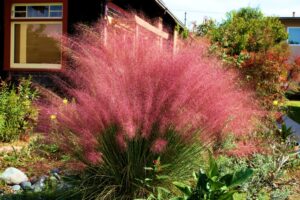Enhance Your Garden’s Health with Cactus Compost: A Green Thumb’s Secret Weapon
Introduction:
Gardening enthusiasts are always on the lookout for effective and sustainable methods to nourish their plants and promote healthy growth. While traditional composting is a well-known practice, one specific type of compost holds remarkable benefits for arid-loving plants—the cactus compost. Rich in essential nutrients and perfectly suited for succulents and desert flora, cactus compost has become a green thumb’s secret weapon for cultivating thriving gardens. In this article, we will delve into the world of cactus compost, exploring its composition, benefits, and how to create your own desert treasure at home.
- Understanding Cactus Compost:
Cactus compost is a specialized blend of organic materials designed to meet the unique needs of cacti, succulents, and other drought-tolerant plants. It is typically crafted to mimic the arid conditions and well-draining soil found in desert environments. The composition of cactus compost usually includes a mix of components such as coarse sand, perlite or pumice, organic matter, and trace minerals. This specific blend ensures optimal water drainage and aeration, preventing the roots from sitting in excess moisture and potentially rotting.
- The Benefits of Cactus Compost:
2.1. Enhanced Water Management: Cactus compost’s excellent drainage properties play a crucial role in maintaining the health of desert plants. By preventing waterlogged soil, it allows for better control over watering and reduces the risk of root diseases caused by excessive moisture. The improved water management provided by cactus compost helps succulents and cacti thrive in environments where water scarcity is the norm.
2.2. Nutrient-Rich Soil: While desert soils may seem barren, they contain trace minerals and organic matter vital for the growth of desert-adapted plants. Cactus compost recreates these essential elements by incorporating nutrient-rich organic matter and minerals into the mix. This ensures that your cacti and succulents receive the necessary nourishment for healthy development and vibrant blooms.
2.3. pH Balance and Aeration: Cactus compost often has a slightly acidic pH level, which is favorable for many desert plants. This pH balance allows for optimal nutrient uptake and mitigates the risk of nutrient deficiencies. Additionally, the inclusion of coarse sand and perlite in cactus compost enhances soil aeration, preventing compaction and promoting robust root growth.
- Creating Your Own Cactus Compost:
Crafting your own cactus compost is a rewarding endeavor that enables you to tailor the mixture to suit your specific plant varieties. Here’s a simple recipe to get you started:
3.1. Ingredients:
- 2 parts coarse sand
- 1 part perlite or pumice
- 1 part organic matter (such as composted bark or coconut coir)
- 1 part well-rotted manure or worm castings
- Optional: small amounts of bone meal or rock dust for trace minerals
3.2. Method:
- Thoroughly mix the ingredients together in a large container or wheelbarrow.
- Ensure a homogeneous blend, paying attention to distribute the organic matter and minerals evenly.
- Store the cactus compost in a dry and covered area until ready for use.
- Using Cactus Compost in Your Garden:
When using cactus compost, it is important to remember the needs of desert plants. Here are some guidelines for incorporating cactus compost into your gardening routine:
4.1. Potting Mix: For container gardening, replace a significant portion of regular potting soil with cactus compost. Aim for a ratio of 1 part cactus compost to 2 parts potting soil. This blend will provide the necessary drainage
This article is provided by hhttps://www.goodgardn.co.uk/blogs/cactus-compost





